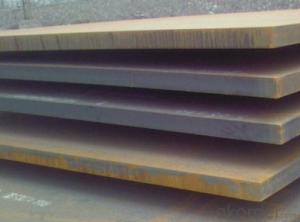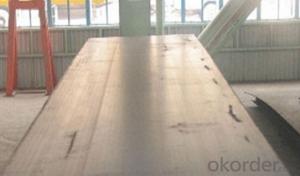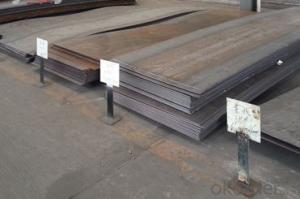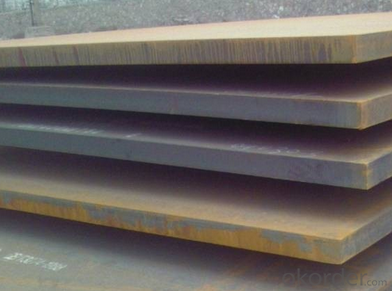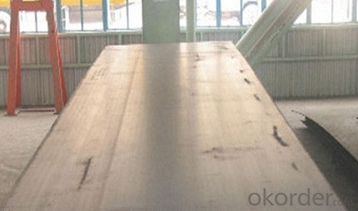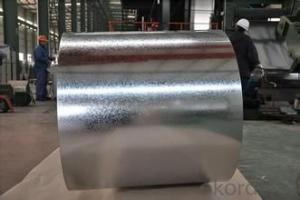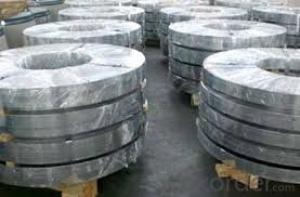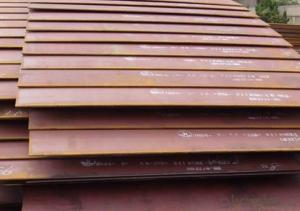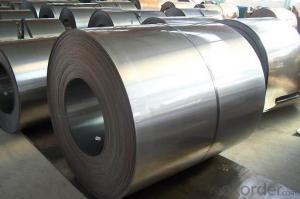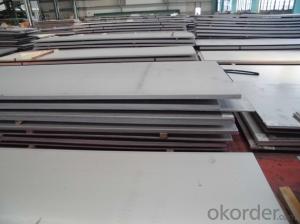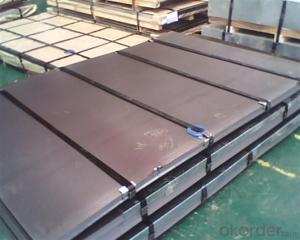Cold Rolled 304 Stainless Steel Sheet CNBM
- Loading Port:
- Qingdao
- Payment Terms:
- TT OR LC
- Min Order Qty:
- 10 pc
- Supply Capability:
- 30 pc/month
OKorder Service Pledge
OKorder Financial Service
You Might Also Like
Quick Details
| Grade: | stainless steel sheet | Standard: | JIS, AISI, ASTM, GB, EN | Length: | 1000-6000mm |
| Thickness: | 0.3-6.0mm cold rolled | Width: | 500-2000mm | ||
| Brand Name: | TISCO | Model Number: | 304 | Type: | stainless steel sheet |
| Application: | construction,decration,foodstuff, gas, metallurgy,biology,chemical,etc | Certification: | SGS | cold rolled finish: | 2B ,BA,Hairline ( brush),No.4 ,8k Mirror |
| hot rolled finish: | No.1 | edge: | raw/mill edge , slit edge | packing: | wooden pallet ,standar export packing |
| inner packing: | interleaving paper | mill test: | quality certification | Inspection: | accept customer inspect |
| Delivery time: | within 5 working days of the stocked grade | Payment term: | T/T or L/C | Quality: | primary quality |
Packaging & Delivery
| Packaging Details: | The packing of 304 steel sheet is wooden packaging;kraft;standard export packaging. |
| Delivery Detail: | The delivery time of 304 steel sheet is within 5 working days |
Specifications
Stainless steel sheet
1.Thickness:0.3-100mm
2.Width:500-3000mm
3.Length:1000-6000mm
4.large stock,short delivery time
Product Description
cold rolled 304 stainless steel sheet
We are suppliers of 304 and 304L Stainless Steel in a wide range of bar, flat, sheet, plate, angle and seamless tubing and pipes.
Stainless steel types 304 and 304L.Type 304 stainless steel material is a kind of common stainless steel materials, corrosion prevention is better than 200 series stainless steel materials. High resistance to high temperature also is better, can to 1000-1
200 degrees. 304 stainless steel has good corrosion and corrosion resistance and good resistance to intergranular corrosion. For oxidizing acid, obtained in the experiment, the concentration of 65% or less under the boiling temperature of nitric acid, 304
stainless steel has a strong corrosion resistance. To most organic and inorganic acid and alkali solution with good corrosion resistance ability.
All stainless stock can be delivered mirror polished if required, Call for details.
Chemistry Data For 304/304L Stainless Steel
304 Stainless Steel | |||||||
Carbon (C) | Manganese (Mn) | Silicon(Si) | Chromium (Cr) | Nickel(Ni) | Phosphorus (P) | Sulfur (S) | Other |
0.08 | 2.0 | 1.0 | 18.00-20.00 | 10.0-14.0 | 0.045 | 0.03 | - |
304L Stainless Steel | |||||||
Carbon (C) | Manganese (Mn) | Silicon(Si) | Chromium (Cr) | Nickel(Ni) | Phosphorus (P) | Sulfur (S) | Other |
0.03 | 2.0 | 1.0 | 17.00-19.00 | 8.0-10.5 | 0.035 | 0.03 | - |
(a) Iron constitutes the remainder. Amounts indicated are maximums or ranges, unless indicated.
Mechanical Data for 304/304L Stainless Steel
Stainless Steel Type | Minimum Tensile Strength (ksi) | Minimum Yield Strength (0.2%, ksi) | Hardnessb |
304 Stainless Steel - Typical Valuesc | 75 | 30 | 88 |
304L Stainless Steel - Typical Valuesc | 70 | 25 | 88 |
- Q: Can steel sheets be recycled without losing their properties?
- Yes, steel sheets can be recycled without losing their properties. Steel is a highly recyclable material, and the recycling process does not compromise its strength, durability, or other properties. Recycling steel sheets helps conserve natural resources and reduce environmental impact.
- Q: Can the steel sheets be easily formed into cylinders or tubes?
- Cylinders or tubes can be easily formed using steel sheets. This technique is commonly referred to as tube or pipe bending. Steel sheets, usually in the form of flat plates, can be bent through different methods like roll bending, rotary draw bending, and induction bending. These techniques exert force on the steel sheet, gradually transforming it into a cylindrical or tubular shape. The pliability and versatility of steel make it highly adaptable for molding into various forms, including cylinders and tubes.
- Q: Q195 galvanized steel plate, is it hot or cold?
- Q195 galvanized steel sheet, the substrate may be hot-rolled, or may be cold-rolled.Cold rolled coil is rolled and rolled on the basis of hot rolled coil. Generally it is the process of hot rolling, pickling and cold rolling.
- Q: Can steel sheets be painted after installation?
- Yes, steel sheets can be painted after installation. Painting steel sheets after installation is a common practice to enhance their appearance and protect them from rust and corrosion. However, it is important to ensure that the surface is clean and free from any contaminants before applying paint. Proper surface preparation, such as cleaning and sanding, is crucial to promote adhesion and ensure a long-lasting finish. It is also recommended to use a primer specifically designed for steel surfaces before applying the desired paint color. Additionally, selecting a high-quality paint that is suitable for exterior or industrial applications will help to provide the best results and durability.
- Q: Are steel sheets suitable for manufacturing water pipes?
- Yes, steel sheets are suitable for manufacturing water pipes. Steel is a durable and strong material that can withstand high pressure and corrosion, making it an ideal choice for water pipe manufacturing.
- Q: Can steel sheets be used for bridge construction?
- Yes, steel sheets can be used for bridge construction. Steel is a commonly used material in bridge construction due to its high strength, durability, and ability to withstand heavy loads. Steel sheets are often used to create beams, girders, and other structural components in bridges, providing the necessary support and stability.
- Q: Are steel sheets prone to warping or buckling?
- Yes, steel sheets are prone to warping or buckling under certain conditions such as high temperatures, uneven cooling, excessive load, or inadequate support. However, the degree of susceptibility depends on the thickness, quality, and type of steel used. Proper installation, handling, and maintenance can minimize the risk of warping or buckling in steel sheets.
- Q: Are steel sheets suitable for automotive exhaust systems?
- Yes, steel sheets are commonly used in automotive exhaust systems due to their durability, heat resistance, and cost-effectiveness.
- Q: Can the steel sheets be easily cleaned?
- Certainly, steel sheets can be effortlessly cleaned. Renowned for their durability and low-maintenance nature, steel sheets can be swiftly wiped down with a damp cloth or sponge accompanied by mild soap or detergent. In the case of stubborn stains or grime, a non-abrasive cleaner is recommended. Moreover, steel sheets exhibit exceptional resistance to rust and corrosion, rendering them well-suited for diverse settings and ensuring hassle-free maintenance in the long term.
- Q: What are the different coating options available for steel sheets?
- There are several coating options available for steel sheets, including galvanized coating, zinc coating, epoxy coating, powder coating, and paint coating. Each option provides different benefits such as corrosion resistance, durability, aesthetic appeal, and ease of maintenance. The choice of coating depends on the specific requirements of the application and the desired outcome.
Send your message to us
Cold Rolled 304 Stainless Steel Sheet CNBM
- Loading Port:
- Qingdao
- Payment Terms:
- TT OR LC
- Min Order Qty:
- 10 pc
- Supply Capability:
- 30 pc/month
OKorder Service Pledge
OKorder Financial Service
Similar products
Hot products
Hot Searches
Related keywords
